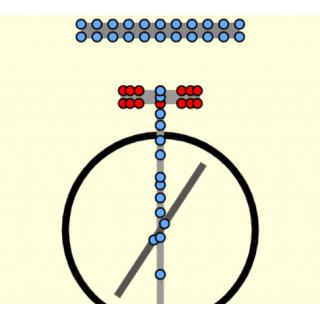
Description
In this lab, you can observe the electroscope and the changes as a charged rod is positioned. Note that the electroscope here is always neutral, even at the beginning. If you bring the insulating charged rod closer to the electroscope, you'll be able to see that the electrons (in blue) and the positive charges (red) on the electroscope cancel one another out.
When you bring the rod closer to the electroscope, the electroscope acts like it is charged even though it isn't. The electroscope becomes polarized. If the rod has a positive charge, electrons in the electroscope are attracted toward the rod and therefore the electrons move toward the top plate of the electroscope, leaving a net positive charge on and near the needle, which deflects. If, instead, the rod has a negative charge, electrons in the top plate of the electroscope are repelled by the electrons on the rod. The electrons on the electroscope move toward the needle, which then deflects.
Moving the rod away reverses the movement of the electrons, so the needle deflects less.
View and write the comments
No one has commented it yet.